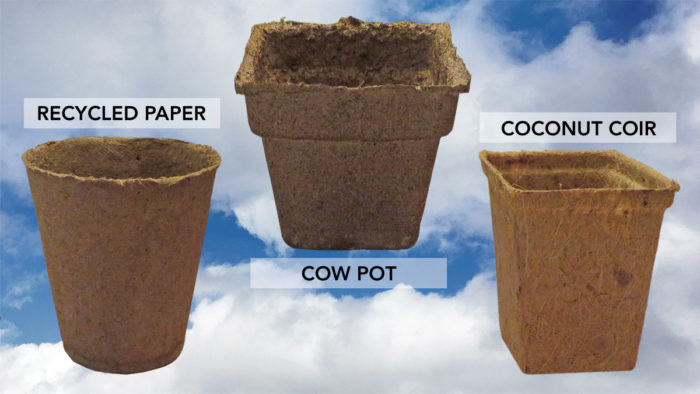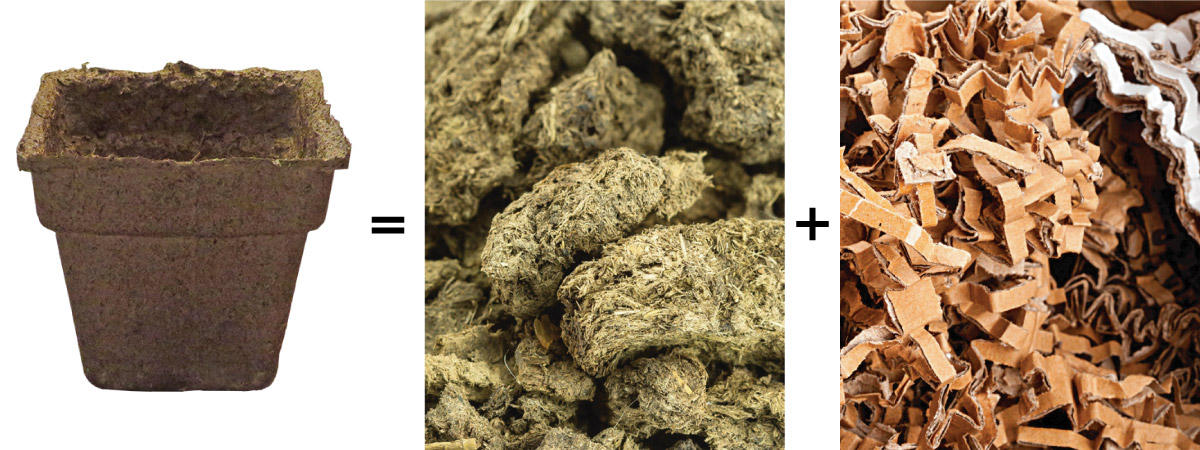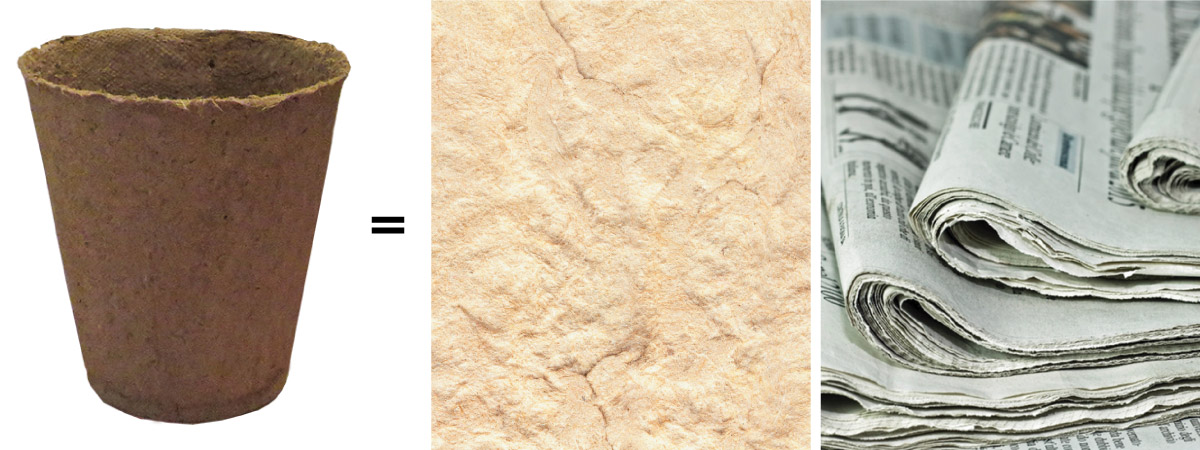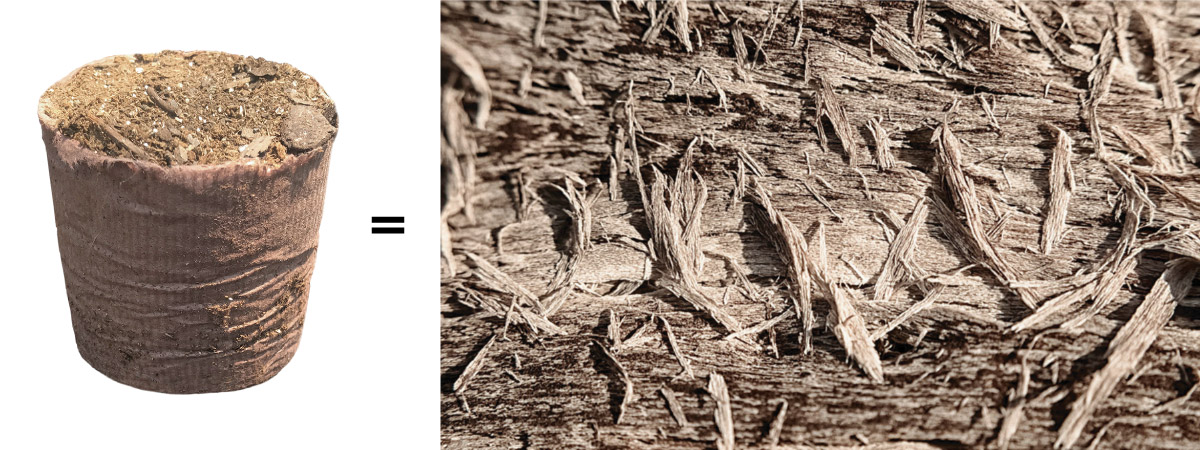Biodegradable Pots: What You Need to Know
Decomposition of an ecofriendly container depends on many factors

How fast do alternative plant containers break down, and do they inhibit root growth? These are common questions when talking about biocontainers. Decomposition of an ecofriendly container depends on many factors, the major ones being the type of container, the environment where it’s planted, and what type of plant is in it. Take, for instance, containers made of cow manure. Studies show up to 88% decomposition when annuals were planted in-ground with cow pots. The studies have been done predominantly in the Southeast, so high summer temperatures and regular rainfall have played an important role. The same studies concluded that plantable containers did not hinder plant establishment and post-transplant growth.
The question is open for longer growing cycles and other types of plants (like shrubs). Here, research is limited. If a crop is grown for a longer time, the container must be stronger to withstand the production conditions. This is why you often see these crops grown in compostable pots, which degrade at a slower rate. Initial research shows that if a stronger form of a plantable container is used, making four long cuts in the sides of the pot before planting is enough to encourage root growth.
For the best success—that is, a happy plant—the type of container should match the crop. The images below shows which types of plants are best suited for certain types of green containers. Look for these pairings when shopping.
Cow pot (plantable)

Made from: Dehydrated cow manure mixed with recycled cardboard pulp
Suitable for: Annuals and vegetable transplants
Recycled paper (plantable)

Made from: Different types of recycled paper, including newspaper
Suitable for: Annuals, perennials, and vegetable transplants
Paper sleeve (plantable)

Made from: Wood fibers
Suitable for: Annuals, plugs, and vegetable transplants
Coconut coir (compostable/plantable)

Made from: Coconut fiber
Suitable for: Perennials and woody plants
Bodie Pennisi is a professor and researcher at the College of Agriculture at the University of Georgia. She is also a statewide extension landscape specialist and has studied the plant industry for years.
Biodegradable pot photos: Bodie Pennisi
To learn more about biodegradable pots, check out Earth-Friendly Containers.














Comments
Log in or create an account to post a comment.
Sign up Log in